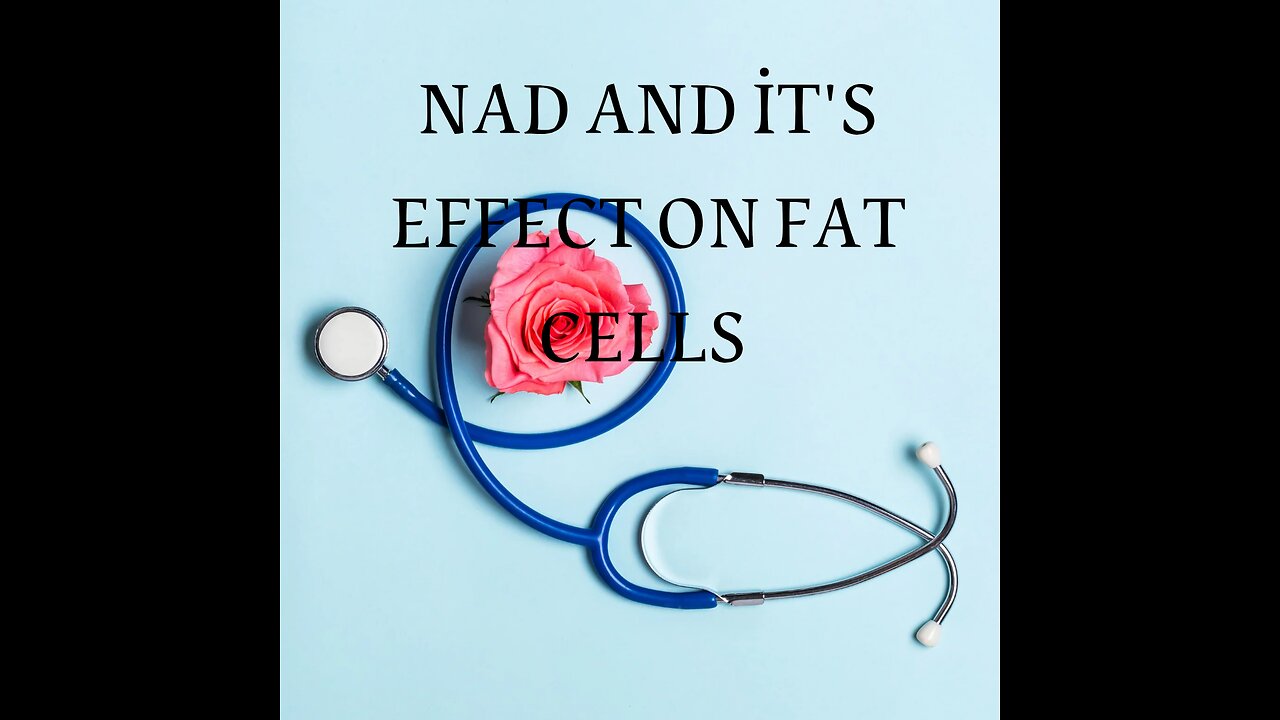Premium Only Content

NAD effect on FAT CELLS
NAD Production in the Body – Importance, Pathways, and Health Benefits
Nicotinamide adenine dinucleotide (NAD) is a vital coenzyme found in every living cell, playing a central role in energy metabolism, DNA repair, and healthy aging. The body produces NAD primarily through three main pathways: the de novo pathway from tryptophan, the Preiss–Handler pathway from niacin (vitamin B3), and the salvage pathway, which recycles nicotinamide from cellular processes. As we age, natural NAD levels decline, leading to reduced mitochondrial function, increased fatigue, and greater susceptibility to age-related diseases. Supporting NAD production through nutrient-rich foods, lifestyle practices, and supplements like nicotinamide riboside (NR) or nicotinamide mononucleotide (NMN) can help maintain optimal cellular energy, promote healthy brain function, and support longevity. Understanding how NAD is synthesized in the body is key to boosting vitality, protecting against oxidative stress, and improving overall metabolic health.
NAD and adipose tissue
NAD metabolism in fat cells
nicotinamide adenine dinucleotide fat storage
NAD+ and obesity
NAD+ and adipocyte function
boosting NAD+ for fat loss
role of NAD in fat metabolism
NAD+ and brown fat activation
NAD deficiency and weight gain
NAD+ supplements for fat burning
NAD+ and mitochondrial function in fat cells
NAD+ and energy balance
how NAD affects lipid metabolism
NAD levels and insulin resistance
NAD+ and white adipose tissue
NADH vs NAD+ in fat regulation
NAD precursors and body fat reduction
sirtuins, NAD+, and fat metabolism
NAD+ and thermogenesis in fat cells
NAD+ restoration and metabolic health
-
 1:36:05
1:36:05
Side Scrollers Podcast
6 hours agoStreamer ATTACKS Men Then Cries Victim + Pronoun Rant Anniversary + More | Side Scrollers
43.1K -
 12:06
12:06
Liberty Hangout
1 day agoDemocrat Woman Can't Define 'Woman'
56.7K81 -
 8:56:27
8:56:27
GritsGG
9 hours agoRumble Customs! 3515 Ws! 🫡!
80.7K -
 38:39
38:39
Grant Stinchfield
7 hours ago $3.03 earnedHow Local TV News LOST Its Soul
48.6K5 -
 2:09:51
2:09:51
Badlands Media
17 hours agoBadlands Daily: Sept. 1, 2025 – Trump vs. Big Pharma, Giuliani Crash, and Mortgage Fraud Fallout
83.2K52 -
 1:12:35
1:12:35
theoriginalmarkz
8 hours agoCoffee with MarkZ. 09/01/2025
65.4K14 -
 2:59:48
2:59:48
Wendy Bell Radio
13 hours agoSunday, Bloody Sunday
147K272 -
 1:10:02
1:10:02
crgoodw1n
7 hours agoHAPPY LABOR DAY! Tactical shoosting W/ @BenderOdoyle Ask about !12hr !freshenup !discord
25.2K2 -
 7:29:06
7:29:06
ENEMYOFDEATH2012
19 hours agoGod of War Playthrough Pt. 2 and some Fortnite
16.1K -
 4:47:50
4:47:50
The Why Files
3 days agoCOMPILATION: UFOs and Aliens Vol.2 | They are NOT our friends
102K59